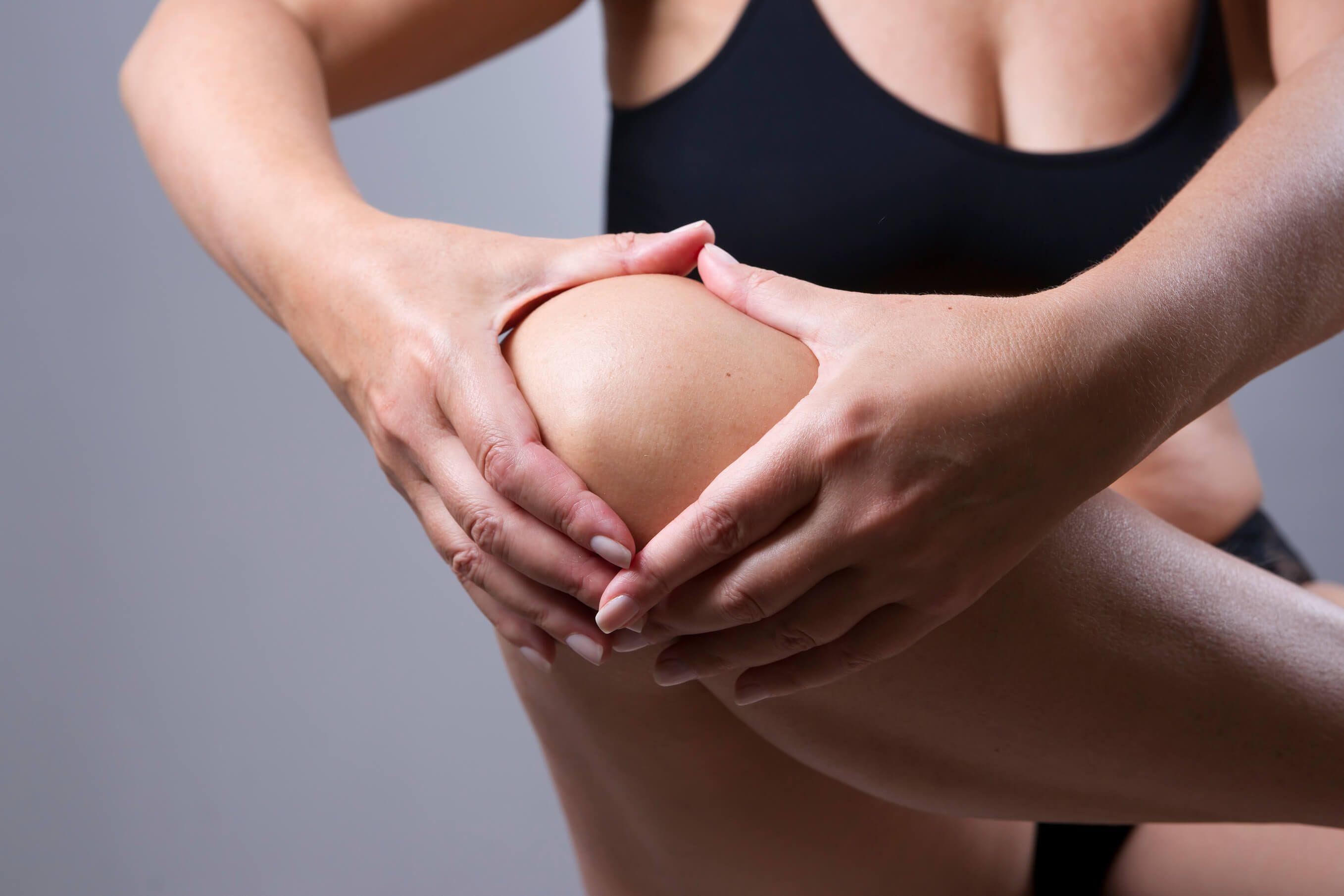Joint Pain Slowing You Down? A Woman's Guide to Chiropractic Relief
)
Many women over the age of 40 experience joint pain that may interfere with their daily lives. Whether it’s that stiffness in the morning that makes getting out of bed a challenge or that persistent ache in your knees after a walk, joint pain can be frustrating and debilitating.
While medications might offer temporary relief, there's a growing interest in natural, drug-free approaches to managing joint discomfort. Chiropractic care offers a natural and effective way to manage joint pain, helping you regain your mobility and improve your quality of life. Let’s explore that in a bit more detail here.
Understanding Joint Pain: Common Causes

Joint pain can stem from a variety of sources, and understanding these causes is the first step in finding relief.
1. Arthritis:
One of the most common causes of joint pain in women is arthritis. There are several types of arthritis, with osteoarthritis and rheumatoid arthritis being the most prevalent.
- Osteoarthritis is often referred to as “wear and tear” arthritis because it results from the natural degeneration of joint cartilage over time. This type of arthritis is common in older women and typically affects weight-bearing joints like the hips, knees, and spine.
- Rheumatoid arthritis, on the other hand, is an autoimmune disorder where the body’s immune system mistakenly attacks the joint linings. This can lead to inflammation, swelling, and pain, particularly in the hands and feet.
2. Injuries:
Injuries from accidents, sports, or even everyday activities can also cause joint pain. A twisted ankle, a fall, or repetitive strain from certain movements can damage the joints and lead to long-term discomfort. Even minor injuries can make joint problems worse if not properly treated.
3. Lifestyle Factors:
Your daily habits play a significant role in joint health. A sedentary lifestyle, poor posture, and obesity can all contribute to joint pain. When we don’t move enough, our joints can become stiff and weak, leading to pain. Also, carrying excess weight puts additional strain on the joints, particularly in the lower body.
4. Age-Related Wear and Tear:
As we age, the joints naturally wear down. This wear and tear can lead to conditions like osteoarthritis, where the cartilage that cushions the joints gradually breaks down, causing pain and stiffness.
Chiropractic Care: A Gentle, Effective Approach to Managing Joint Pain
Chiropractic care offers a holistic and non-invasive approach to managing joint pain. Unlike medications that may only mask the symptoms, chiropractic treatments focus on addressing the root causes of the pain, helping to restore joint function and reduce discomfort.
1. Chiropractic Adjustments:
One of the primary methods chiropractors use to treat joint pain is spinal and joint adjustments. These adjustments involve the application of controlled pressure to the joints, particularly the spine, aimed at correcting misalignments and improving joint mobility. These adjustments are tailored to each individual’s needs, ensuring a safe and effective treatment plan.
2. Soft Tissue Therapy:
In addition to adjustments, chiropractors often recommend the use soft tissue therapy to relieve joint pain. This therapy involves techniques like massage and myofascial release to target the muscles and soft tissues surrounding the joints.
Soft tissue therapy helps to relax tight muscles, reduce inflammation, and improve blood flow to the affected areas. This can be particularly beneficial for women experiencing joint pain due to muscle tension or injury. By addressing the surrounding tissues, health providers may help reduce the stress on the joints and promote healing.
3. Posture and Alignment:
Proper posture is essential for maintaining joint health. Poor posture, whether from sitting at a desk all day or carrying heavy bags, can lead to misalignments in the spine and put additional strain on the joints. Over time, this can result in chronic pain and discomfort.
Chiropractors assess your posture and alignment to identify any areas that may be contributing to your joint pain. They may provide guidance on how to improve your posture and may recommend exercises to strengthen the muscles that support your joints. By improving posture and alignment, chiropractic care may help to prevent further joint damage and reduce pain.
4. Customized Treatment Plans:
Every woman’s body is unique, and so is the source of her joint pain. Chiropractors develop customized treatment plans based on a thorough assessment of your individual needs. This personalized approach ensures that you receive the most effective care for your specific condition.
A chiropractor may incorporate a combination of chiropractic adjustments, soft tissue therapy, and lifestyle recommendations to create a comprehensive treatment plan. This holistic approach not only targets your current pain but also may help to prevent future issues by promoting overall joint health.
Benefits of Chiropractic Care for Joint Pain

Chiropractic care offers numerous benefits for women dealing with joint pain, particularly those seeking relief without relying on medication.
1. Pain Relief:
One of the most sought-after benefits of chiropractic care is pain relief. By addressing the underlying causes of joint pain, chiropractic adjustments may provide significant and lasting relief. Many women experience a reduction in pain after just a few sessions, allowing them to return to their daily activities with greater ease.
2. Improved Mobility and Flexibility:
Joint pain often limits mobility and flexibility, making it difficult to perform everyday tasks. Chiropractic care may help to restore range of motion in the affected joints, allowing you to move more freely. Improved mobility not only reduces pain but also enhances your overall quality of life.
3. Non-Invasive Approach:
For women who prefer to avoid surgery or medication, chiropractic care offers a natural and non-invasive alternative. Chiropractic treatments are gentle and focus on helping the body heal itself. This approach reduces the risk of side effects associated with medications and the recovery time required for surgery.
4. Holistic Health Improvement:
Chiropractic care takes a holistic approach to health, focusing on the body as a whole rather than just treating symptoms. This means that in addition to addressing joint pain, chiropractic care may also improve your overall well-being. Regular chiropractic visits may help you maintain better posture, reduce stress, and enhance your body’s natural healing abilities.
When to See a Chiropractor
If you’ve been experiencing joint pain that impacts your daily life, it may be time to see a chiropractor. Some signs that indicate you should seek chiropractic care include:
- Persistent pain or stiffness in the joints.
- Difficulty performing daily activities due to joint discomfort.
- Pain that worsens with movement or activity.
- Swelling or tenderness in the joints.
During your first visit, the chiropractor will conduct a thorough assessment to determine the cause of your joint pain and develop a customized treatment plan just for you. This plan may include regular adjustments, soft tissue therapy, and lifestyle recommendations to help you achieve long-term relief.
Better Health May Be for You
Joint pain doesn’t have to be a permanent part of your life.Dr. Lanoue and his team of dedicated health professionals have helped many patients find relief from joint pain for more than 30 years.
Please contact us if you’re experiencing joint pain, or if you have any questions about how chiropractic care, massage or physiotherapy may help you to manage your symptoms more effectively and improve your quality of life.
Better Health may be for you: Call Dr. Lanoue
Patient Testimonial
I’m able to walk pain-free today because of Dr. Lanoue.
Over the past 20 years I've been to four different chiropractors - none of them come close to Serge's extensive knowledge, expert care or his state of the art equipment.
I’ve been seeing Serge for the past five weeks to treat a herniated disc. I can tell you that he'll be my chiropractor for life and would highly recommend him to anyone who wants to get their life and health back.
THANK YOU SERGE!
References
- Mayo Clinic - Osteoarthritis and Rheumatoid Arthritis
- Ontario Chiropractic Association - Help to Manage Your Arthritis
- National Institutes of Health (NIH) - What Chiropractors Do
- Harvard Health Publishing - Chiropractic care for pain relief
) Author:Dr. Serge Lanoue
Author:Dr. Serge Lanoue| Tags:Wrist Pain and Strainschiropractic treatmentchiropractic adjustmentchiropractic careJoint PainKnee Pain |
Post comment


